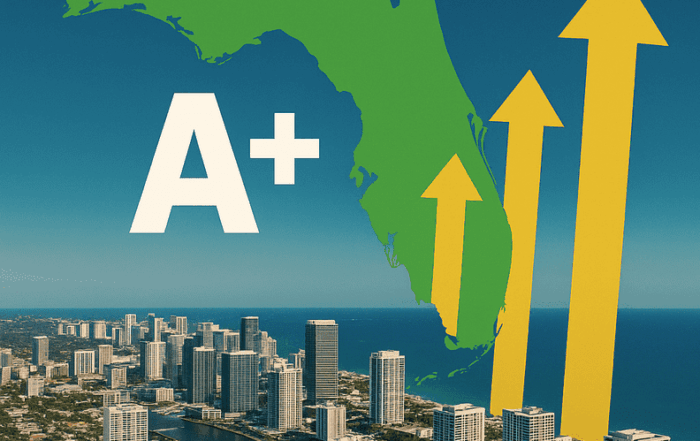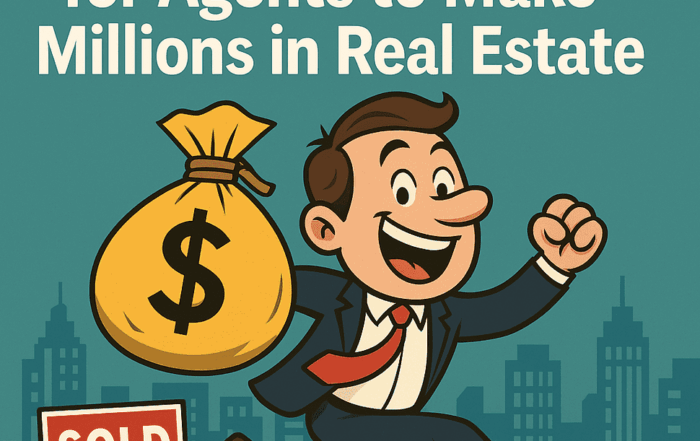
Imagine you have a favorite pack of stickers that you always exchange with a friend who lives far away. Now, imagine if you suddenly had to pay extra coins every time you got these stickers because the rules changed. Tariffs are like that extra fee. When a country—like the United States—decides to charge extra fees on products coming from another country (in this case, China), the prices for those products go up.
Many building materials, tools, and supplies are imported from China. When tariffs increase, these items become more expensive for the companies that use them to build homes, offices, and malls. That means projects can cost more, and those extra costs often get passed on to customers or investors. Now, let’s take a closer look at how this plays out in the real estate and home improvement sectors.
Part One: Impact on Real Estate Businesses
Homebuilders and Developers
Homebuilders and property developers are among the first to feel the pinch when tariffs go into effect. Many of the raw materials used in constructing houses—like steel, aluminum, glass, and electrical components—often come from China. With tariffs in place, the cost of these materials increases.
This means that companies such as large home builders have to spend more money on the same supplies, which in turn pushes up the overall price of constructing a new home or apartment complex. Think of it as having to pay extra for each block in a giant LEGO set. When the price of those blocks goes up, the final cost of your awesome LEGO castle rises too.
For property developers, this can result in delayed projects or a decision to use alternative, sometimes less ideal, materials. A delay in building can mean fewer homes available, and that might eventually lead to increased home prices. Some developers may even change their plans by opting for designs that require fewer imported materials.
Commercial Real Estate Companies
Commercial real estate is not immune to the effects of tariffs. Companies that own office buildings, shopping centers, and mixed-use properties also rely on building supplies that come from abroad. When the cost of these supplies increases, the expenses for maintaining and developing commercial properties also rise.
For example, a shopping mall that houses a variety of retailers might see a drop in customer traffic if the stores inside raise their prices to cover their increased costs. The landlords or property management companies might then have to offer lower rental rates to attract tenants, or they may pass on the additional cost to the consumers. This ripple effect can create uncertainty in the market, where both tenants and owners are left guessing about future expenses.
Some major commercial real estate firms are even changing their investment strategies. They might focus more on properties that use local materials or look for ways to innovate so that new projects do not rely as much on international supplies. In addition, some companies are turning to energy-efficient and sustainable building practices as an alternative that may help to reduce costs.
Real Estate Investment Trusts (REITs)
REITs are companies that pool money from many investors to purchase income-generating properties such as warehouses, shopping centers, or office buildings. These trusts benefit from steady rental income and typically enjoy a diversified portfolio. However, when tariffs increase costs, the values of the properties owned by REITs can be negatively impacted.
Take warehouse REITs as an example. Many warehouses depend on the smooth movement of goods and the steady supply of imported materials. If tariffs reduce the volume of international trade, the need for storage space may decline. This can cause the earnings of those REITs to drop, leading to a decrease in their stock value. Investors in these trusts must now weigh the risk of lower returns against any potential future growth.
Construction Material Suppliers
Not only do the large companies feel the effects, but the suppliers of construction materials also face challenges. When tariffs are imposed, the cost to purchase items such as tiles, wood, and plumbing supplies increases. Some suppliers try to pass these costs on to the builders and developers. However, if the price hikes are too steep, some projects may be delayed or even canceled, impacting the revenue and stability of these supplier companies.
In some cases, suppliers may look for alternative sources for their products or start exploring local manufacturing options. This shift can take time, and until it happens, both suppliers and builders must adjust to a new normal where every screw or nail might cost a bit more.
The Ripple Effect on the Housing Market
Ultimately, the increase in tariffs affects the general housing market as well. When homebuilders incur higher costs, they often raise the selling price of new homes. This can reduce housing affordability, especially for first-time buyers. Moreover, if new home construction slows down due to increased costs, the supply of available houses may shrink while demand stays the same or even grows. This imbalance can lead to higher market prices, making it harder for some people to buy a house.
Homebuyers and real estate investors both have to be aware of these potential changes and adjust their strategies. For investors, it means possibly shifting focus to markets less affected by tariffs or seeking opportunities in more stable segments of real estate.
Part Two: Impact on Handyman and Home Improvement Supplies
Big Home Improvement Stores
Major home improvement retailers such as Home Depot and Lowe’s are key players in this story. These stores sell a wide variety of products used in home repair and improvement, many of which are imported from China. Tools, building materials, tiles, and lighting fixtures are a few examples of items that see a cost increase when tariffs hit.
When customers visit these stores, they may notice that the prices for certain items are higher. The extra cost is a result of the increased tariffs passed down through the supply chain. For example, a power tool that once cost a certain amount might now require a higher price tag. This rise in cost can affect professional contractors and handymen who rely on these tools daily.
Local Hardware Stores
Local hardware stores are not completely insulated from these changes either. Many of these smaller shops also source products from abroad or depend on larger distributors who face increased costs. As a result, local stores may also raise their prices to cover the extra fees imposed by the tariffs.
For independent handymen and contractors, these price hikes can affect overall project costs. While big box stores might have more buying power, neighborhood hardware stores sometimes offer a personal touch and local expertise that is hard to match. Both types of stores, however, must contend with the same problem: higher supply costs that eventually reach the consumer.
Products Experiencing Price Increases
-
Tools and Equipment
-
Power Tools: Drills, saws, and other electric devices are frequently imported. With tariffs making their parts and assembly more expensive, these tools might now have higher prices at the checkout. This can particularly affect those who rely on specialized tools for detailed work.
-
Hand Tools: Items like hammers, screwdrivers, wrenches, and pliers are also at risk. Even if a hammer is not as technologically advanced as a power tool, the cost increase can add up if it is made with components sourced from abroad.
-
Smart Home Gadgets: Increasingly, new tools involve integrated technology—such as smart thermostats and WiFi-connected cameras. These gadgets, which are often partly manufactured in China, might also see their prices rise.
-
-
Building Materials and Supplies
-
Flooring and Tiles: Many popular flooring solutions, including ceramic and porcelain tiles, come from overseas manufacturers. Tariffs can lead to noticeable price increases, causing contractors to either switch to more expensive options or seek alternatives.
-
Cabinets and Fixtures: Kitchen cabinets, bathroom vanities, and decorative fixtures may see higher prices due to the increased cost of imported materials. This means that remodeling projects can require extra budget allocation.
-
Plumbing and Electrical Supplies: Essential items such as faucets, sinks, wiring, and outlets are also subject to tariff pressure. Every improvement project might have to adjust its budget to cope with these rising costs.
-
Paints and Adhesives: Even everyday items like paint and various adhesives have ingredients or packaging that come from China. This often results in modest price hikes that add up over time in large projects.
-
-
Miscellaneous Items
-
Fasteners and Small Hardware: Items like nails, screws, and bolts, though small, are ubiquitous in construction and home repair projects. Increased tariffs can mean that a box of screws costs more, affecting the overall cost of a job.
-
Decorative Items: Lighting fixtures, mirrors, and other decorative home accessories might become less affordable, especially if they are highly imported from overseas.
-
Adjusting Strategies for Handymen and Rehabbers
When the prices of tools and materials go up, handymen, contractors, and home improvement professionals need to find ways to adjust so that projects can continue without breaking the bank. Here are some practical strategies for adapting to the new normal:
-
Plan Ahead and Monitor Prices
One of the smartest moves you can make is planning your projects with the new prices in mind. By keeping a close eye on the cost of materials and supplies, you can buy items in advance if they are expected to rise further. It is like stocking up on your favorite snacks when you know they might become more expensive later. -
Explore Local and Domestic Suppliers
Sometimes, the best way to beat a problem is to avoid it altogether. Look for local or domestic suppliers who produce building materials and tools. These suppliers may not be affected by tariffs in the same way and can provide competitive pricing. This switch can not only help maintain your budget but also support local businesses. -
Adjust Project Budgets
It is important to always have a little extra set aside in your project budget for unforeseen cost increases. A small reserve can be a lifesaver when tariffs cause the prices of key items to rise unexpectedly. Think of it as your emergency savings that help you manage sudden expenses without stress. -
Innovate and Use Alternative Materials
Challenges often bring creativity. If certain imported materials become too expensive, search for alternatives that are more affordable yet effective. For instance, you might find a different type of tile or countertop material that meets your quality standards but is sourced from a domestic manufacturer. This kind of innovation can not only save money but also open up new design possibilities. -
Build Long-Term Relationships with Suppliers
Establishing strong, long-term connections with your suppliers can offer you some protection against sudden price hikes. Loyal customers sometimes get special deals or early notifications of upcoming changes. By creating a reliable network, you may secure a steadier supply of materials at competitive rates. -
Adopt Efficient Building Practices
Another effective strategy is to review your construction and renovation practices to minimize waste and reduce overall costs. Improved project management, lean construction techniques, and smarter resource allocation can help offset the impact of rising material costs. Efficiency not only saves money but also makes your work more sustainable in the long run.
How Investors Should Respond to These Changes
Understanding the Risks
For real estate investors, the increased costs that come with tariffs represent a new risk factor that needs careful evaluation. Investors need to consider how rising material costs might affect property values, project timelines, and overall returns. A slowdown in construction activity can mean that new investment opportunities are delayed, and existing projects may not generate the same level of profit.
Diversification and Risk Management
One of the best defenses against market changes is diversification. Investors should not put all their money into one type of property or a single market segment. By spreading investments across residential, commercial, industrial, and even technology-enhanced real estate sectors, investors can mitigate the risk that a cost increase in one area will damage their entire portfolio.
Furthermore, adopting risk management techniques such as hedging or using adjustable contracts can help smooth out the bumps caused by unexpected cost increases. These financial tools provide a cushion during times when tariffs drive up expenses, ensuring that investors still find value in their long-term plans.
Seeking Innovative Investment Opportunities
The challenges brought about by tariffs can also create unique investment opportunities. For instance, developers who excel at using local materials or who employ modern, efficient building techniques might become more attractive in a market where traditional methods have become too expensive. Investors on the lookout for strong management teams that can navigate a rapidly changing market may find that companies which are agile and innovative outperform those that stick to the old ways.
Additionally, investors might shift focus toward projects that are less dependent on imported supplies. For example, mixed-use developments in urban areas often benefit from local supply chains and a concentrated market demand. In contrast, projects that rely heavily on international trade routes might face more uncertainties.
Long-Term Planning
Tariffs tend to create short-term disruptions, but real estate is typically a long-term investment. Smart investors focus on the fundamentals—like prime location, strong management, and sustainable design. By looking at the long game, investors are less likely to overreact to temporary cost hikes. Instead, they can use periods of volatility as an opportunity to adjust their portfolios in anticipation of market corrections over time.
Investors should regularly review their portfolios and consider how tariff-driven cost increases might affect their overall strategy. Working with financial advisors who understand both the real estate market and the global supply chain can provide insight into the best course of action.
In Summary
The world of real estate and home improvement is feeling the ripple effects of China tariffs in many ways. For real estate businesses—from homebuilders and commercial property managers to REITs and construction material suppliers—tariffs mean higher costs. These increased expenses can delay projects, raise home prices, and lead to changes in market dynamics.
At the same time, big home improvement stores and local hardware shops are likely to pass on the extra costs to their customers. As the prices for power tools, hand tools, flooring, tiles, cabinets, and plumbing supplies climb, handymen, contractors, and real estate rehabbers need to adjust their strategies. By planning ahead, exploring local alternatives, setting aside extra budget funds, and building strong supplier relationships, these professionals can minimize the impact on their projects.
Real estate investors must also take note. The additional costs that come with tariffs create risks that need to be managed with diversification, long-term planning, and innovative strategies. Instead of panicking when prices go up, investors can see these challenges as an opportunity to re-balance their portfolios and invest in properties and companies that are agile in a changing economic landscape.
Ultimately, while tariffs pose challenges for the industry, they also force everyone to look for new and improved ways to get the job done. Whether you are building new homes, managing commercial properties, or fixing up a beloved old house, understanding and planning for these changes can lead to a stronger, more resilient approach that benefits everyone in the long run.
By staying informed, remaining adaptable, and planning carefully, real estate professionals and investors alike can weather the storm of higher costs and continue to build and renovate with confidence—even when global trade policies shift the landscape in unexpected ways.
— Jorge Vazquez, CEO of Graystone Investment Group
Keep it consistent, stay patient, stay true—if I did it, so can you! Ready to learn? Let me guide you at propertyprofitacademy.com – Jorge Vazquez, CEO of Graystone Investment Group & its subsidiary companies and Coach at Property Profit Academy
Pick your expert. Book your free 15-minute consult now. We are here to help!
Our Top Articles
Why You Should Sell Your Deals with Us
Jorge Vazquez2025-08-02T03:43:24+00:00August 2nd, 2025|Comments Off on Why You Should Sell Your Deals with Us
Let’s keep it real—wholesaling ain’t easy. You lock up a deal, hustle to find a [...]
Landlords, Listen Up: Florida’s A+ Economy Is Coming—Here’s Why 2025 Still Makes Sense
Jorge Vazquez2025-08-01T19:53:23+00:00July 31st, 2025|Comments Off on Landlords, Listen Up: Florida’s A+ Economy Is Coming—Here’s Why 2025 Still Makes Sense
Florida’s A+ Economy in 2026: What This Means for Landlords, Renters, and Real Investors Like Me By Jorge Vazquez, [...]
What It Really Takes for Agents to Make Millions in Real Estate
Jorge Vazquez2025-08-01T01:32:51+00:00July 31st, 2025|Comments Off on What It Really Takes for Agents to Make Millions in Real Estate
What It Really Takes for Agents to Make Millions in Real Estate Inspired by a Fellow Featured Agent—Kat Palmiotti [...]
Property Profit Academy:
✔ Learn to buy properties with little to no money down.
✔ Build a $10M portfolio step by step.
✔ Master strategies like BRRRR and house hacking.








